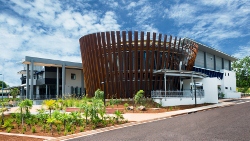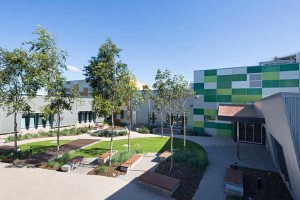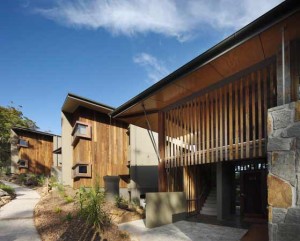Two projects have taken out top honours in the Australian Institute of Architects’ 2013 Far North Queensland Regional Architecture Awards announced tonight.
Cairns Foreshore Redevelopment by CA Architects and Cox Rayner Architects in association with O’Neill Architecture received a Regional Commendation and the Eddie Oribin Award for Building of the Year.‘The Cairns Foreshore Development is an important contribution to the urban design puzzle for Cairns.
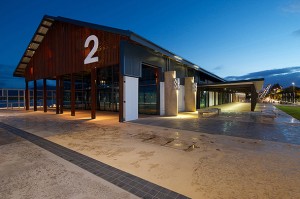
‘The Cairns Foreshore Development is an important contribution to the urban design puzzle for Cairns.
‘It provides a flexible and intriguing set of spaces and makes impressive reuse of the existing hardwood timber from the site.
‘The fusion of playground, sculpture, outdoor shelters and amenities ensures that it is embraced by the whole community,’ the jury said.
The jury awarded the House of the Year Award to Charles Wright Architects for their Glass House project.
‘Glass House is an experiment in sampling the modernist principals of Phillip Johnson’s icon and melding it with a contemporary mode of living in the tropics. It is an adventurous move by both architect and client.
‘Its brave approach is matched and revealed by an exquisite use of detail and material. It is a striking contribution to the lexicon of tropical architecture,’ the jury noted.
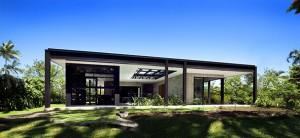
This year locals had the opportunity to vote for their favourite project in the People’s Choice Award which went to James Cook University Lecture Theatre by Suters Architects.
Fifteen projects were entered in the awards in commercial, heritage, interior, public, residential and small project architecture and urban design categories.
In total the jury awarded nine Regional Commendations in addition to the Eddie Oribin Award for Building of the Year and the House of the Year.
Regional Commendations:
| JCU Central Energy Plant | Clarke and Prince Pty Ltd | Commercial Architecture | Smithfield |
| Mt Sheridan Plaza Cairns | Reddog Architects Pty Ltd | Commercial Architecture | Cairns |
| Retail Store and Offices Lockhart River | Kevin O’Brien Architects in association with Project Services | Commercial Architecture | Lockhart River |
| Undara Experience | EdgeArchitecture | Commercial Architecture | Mt Surprise |
| Cairns Foreshore Redevelopment | CA Architects & Cox Rayner Architects in association with O’Neill Architecture | Heritage | Cairns |
| Glass House | Charles Wright Architects | Residential Architecture – Houses | Edge Hill |
| Charles Street Residences | Studio Mango | Residential Architecture – Multiple Housing | Cairns North |
| Curator’s Office – Tank Arts Centre | Total Project Group Architects | Small Project Architecture | Cairns North |
| Re-Newell | Charles Wright Architects | Small Project Architecture | Newell Beach |
Far North Queensland Regional Jury Coordinator Dr Shaneen Fantin, Principal at People Oriented Design and Juror Andrew Lane, Principal at Indij Architectural & Interior Design along with Lay Juror Kier Shorey, Presenter of the Breakfast Show on ABC Far North Queensland, assisted the 2013 Awards Jury Director, Mark Damant (Woods Bagot) and Deputy Director, Liam Proberts (bureau^proberts) and State Jurors, Eloise Atkinson (Deicke Richards Architects) and Paul Curran (PUSH Architects) with selecting the winning projects, which now progress to the coveted Queensland Architecture Awards to be announced in Brisbane on 21 June.
For media enquiries and high resolution images contact:
Alexandra Cato
National Media and Communications Officer
Australian Institute of Architects
P. + 61 (3) 8620 3813 | M. +61 (0) 416 022 818
alexandra.cato@architecture.com.au
The Australian Institute of Architects is the peak body for the architectural profession, representing 11,500 members across Australia and overseas. The Institute actively works to improve the quality of our built environment by promoting quality, responsible and sustainable design. Learn more about the Institute, log on to www.architecture.com.au.

